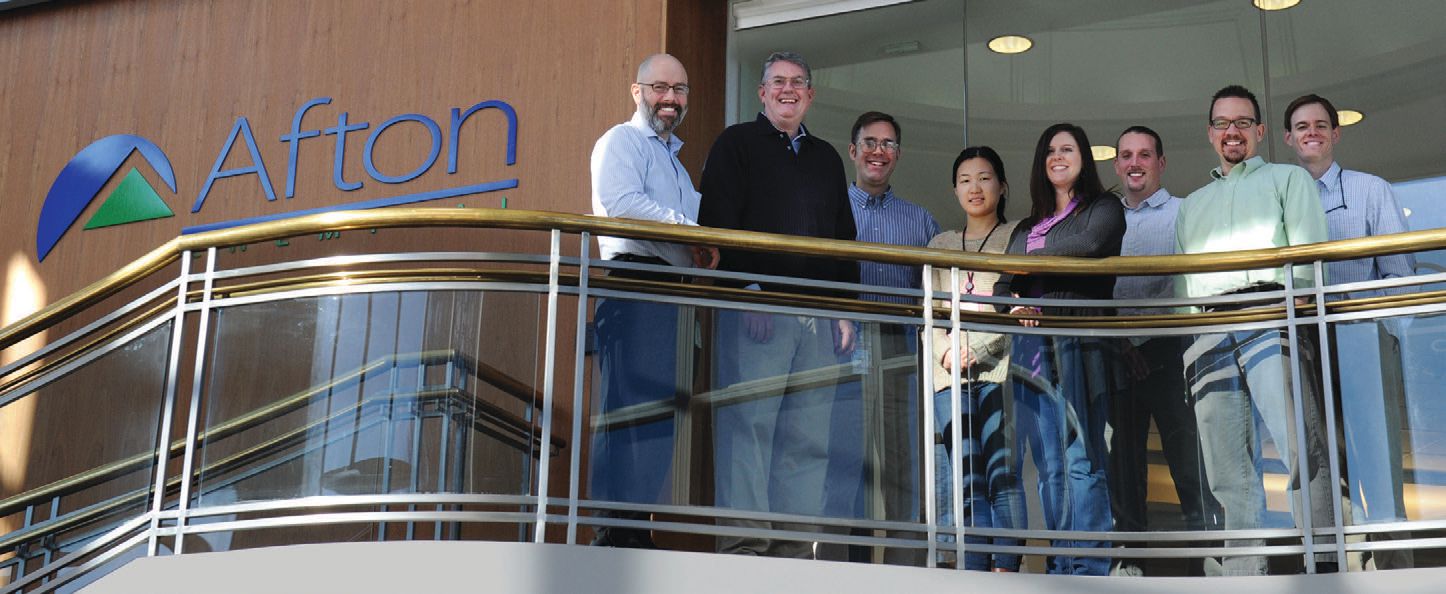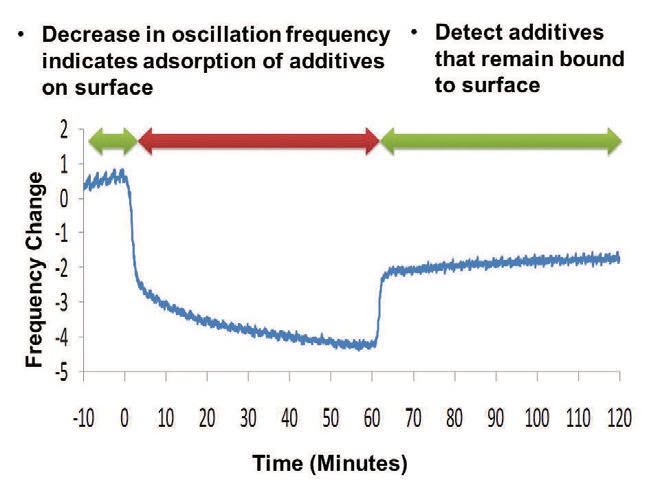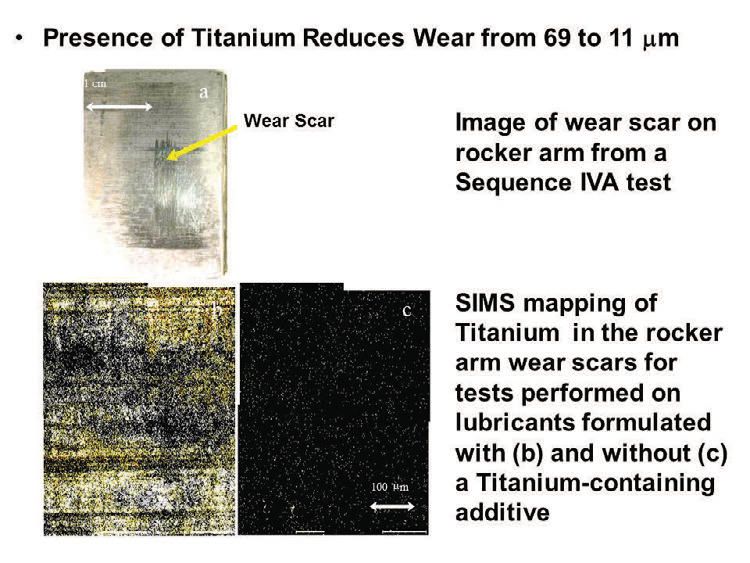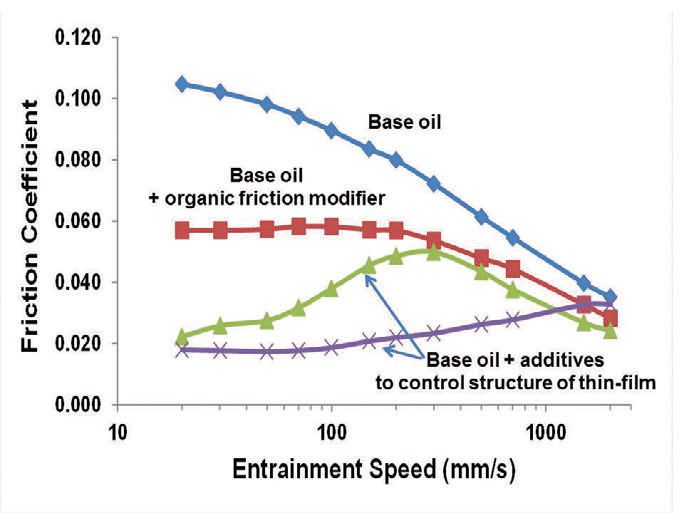20 Minutes With Mark Devlin
Karl M. Phipps, Managing Editor | TLT 20 Minutes June 2014
Afton Chemical Corp.’s technical advisor discusses new technological advancements in fundamental tribology research.
MARK DEVLIN - The Quick File
Mark Devlin is a technical advisor for Afton Chemical Corp. in Richmond, Va., where he studies the rheological and tribological properties of lubricants.
Prior to joining Afton Chemical (formerly Ethyl Corp. Petroleum Additives) in 1990, Mark worked as an IRTA Fellow at the National Institutes of Health in Bethesda, Md.
Mark has been a co-author or co-inventor on more than 100 technical papers and patents, covering a broad range of topics related to the fundamental activity of lubricants for use in engines, transmissions, automotive gears and industrial machinery. He is the recipient of several research and industry awards, including the STLE Captain Alfred E. Hunt Memorial Award (2011), SAE Award for Research on Automotive Lubricants (2008), SAE Lloyd L. Withrow Distinguished Speaker Award, SAE Forest R. McFarland Award in recognition of outstanding service and the ASTM Committee D02 Award of Appreciation. Mark is an active member of STLE, SAE, ASTM International and the American Chemical Society.
Mark received his bachelor of arts in chemistry from Duke University in Durham, N.C., in 1983 and his doctorate in physical chemistry from the University of Virginia in Charlottesville, Va., in 1988.
 Dr. Mark Devlin (pictured second from the left), along with Afton Chemical’s Physical Sciences group (left to right): Jeff Guevremont, Grant Pollard, Xin Tian, Karen Hux, Aaron Whitworth, Carl Bennett and Ken Garelick. The team developed a new method for studying the adsorption of additives to different surfaces using a quartz crystal microbalance.
Dr. Mark Devlin (pictured second from the left), along with Afton Chemical’s Physical Sciences group (left to right): Jeff Guevremont, Grant Pollard, Xin Tian, Karen Hux, Aaron Whitworth, Carl Bennett and Ken Garelick. The team developed a new method for studying the adsorption of additives to different surfaces using a quartz crystal microbalance.
TLT: What interested you in pursuing a career in tribology?
Devlin: My interest in tribology was not planned but occurred by chance. I am a physical chemist by training, and as a post-doctoral fellow I studied the structure of lipid assemblies by vibrational spectroscopy. This research began my interest in understanding the structure of molecular assemblies at interfaces. In graduate school and as a post-doctoral fellow, I found that I liked the process of conducting basic research studies, but I wanted to see if I could do applied research in an industrial setting.
My wife, Cathy, who also has a doctorate in chemistry, and I were both looking for careers in industry. She was invited to a job interview with Ethyl Corp. (now Afton Chemical Corp.) and asked if there was also an open position for me. Luckily, we were both hired to work in Afton’s research facilities in Baton Rouge, La., and my career in tribology got started.
TLT: What is your approach to research and how has it influenced your career?
Devlin: Throughout my career at Afton, I have been fortunate to work for and with people who understand the importance of asking the right questions, even if they are difficult to answer and then finding ways to answer these questions. I am comfortable with this approach because it requires challenging our preconceived ideas with new information. For example, while at Afton I have always been involved in projects to better understand how lubricants affect mechanical efficiency.
In the early 1990s when I first started this research, the practical solutions to developing energy-efficient lubricants were to lower a lubricant’s kinematic viscosity and add friction modifiers to the lubricant. However, these solutions did not produce consistent efficiency gains in all applications. At that point, I was allowed to ask what physical properties of lubricants universally influence efficiency and how do friction modifiers work as operating conditions change? In answering these questions, we have discovered many unique ways to improve mechanical efficiency, as well as solutions to other tribology issues.
TLT: There have been numerous developments in tribology instruments and data-acquisition systems. What are some of the more important technological advancements that impact tribology?
Devlin: There are many new instruments that have helped me answer critical questions throughout my career, but I think the major advancement for the entire field is a change in the lubricant industry’s attitudes toward tribology research. Early in my career, my sense was that chemists, like myself, treated engine tests and rig tests as black boxes. We would design a series of lubricants with different physical properties that we could easily measure, test them in a black box and then analyze the data to develop a new lubricant. We have progressed to the point where we are now asking what is happening inside an engine or machine and how changes to the lubricant under the conditions we observe affect the performance of the engine or machine.
Back to the efficiency example, as we study what is happening in engines and machines, we know that the lubricant operates under a wide range of temperatures, shear rates and pressures. This understanding has moved the tribology industry to develop techniques to better measure lubricant properties under more realistic conditions. The other benefit is the industry is finding conditions under which engines and machines operate most efficiently and lubricants are being designed specifically for those operating conditions. This approach means that when designing engines and machines, we are not only thinking about the mechanical engineering but also the tribology/ lubrication engineering.
TLT: You are responsible for guiding fundamental research at Afton Chemical. How do you identify or prioritize your research topics?
Devlin: I like to refer to fundamental research as basic-applied research, since we apply our basic understanding of tribology to solve problems that are relevant to our customers. This means we ask our internal and external customers what technical issues need to be examined to solve their most important issues. Also, there are a lot of very bright people that I work with who have great ideas about what we need to know to address our customer’s issues. Therefore, I try to let the people I work with identify and prioritize new research topics that will help us resolve technical issues.
I’ll keep going back to the efficiency example that I discussed before. In most discussions about lubricant effects on efficiency, the industry concentrates on reducing parasitic energy losses (viscosity and friction). However, in discussions about overall vehicle fuel efficiency, we find that an engine most efficiently converts chemical energy to mechanical energy under conditions where the engine generates high torque. High torque input into an automatic transmission can cause vibrations and noise. So we have focused our basic-applied transmission efficiency research on ways to better understand how vibrations and noise can be controlled under high-torque conditions. This has led us to several projects we would not have envisioned if we had just focused on improving efficiency by reducing viscosity and friction.
Second, we try to identify and prioritize research projects by focusing on the persistent unanswered questions. Chances are if a customer is asking the same question every time you meet them, it’s a question worth answering. An example of this type of persistent question occurs when friction modifiers are added to lubricants. How does the friction modifier affect the performance of the antiwear additives? At any given time, this issue may be related to industrial lubricants, gear lubricants or engine lubricants. Using that as the general technical background, members of my group decided we needed to develop a method to study the adsorption of additives to different surfaces using a quartz crystal microbalance (
see Figure 1). This type of research has allowed us to better understand the competition between additives on surfaces and quickly answer customer questions related to the effect of surface competition on lubricant performance.
 Figure 1. Adsorption of ZDDP on a steel surface as detected by QCM monitoring.
Figure 1. Adsorption of ZDDP on a steel surface as detected by QCM monitoring.
Source: Guevremont, J.M., Garelick, K. and Devlin, M.T., “Adsorption of Various ZDDP’s on Steel: Study of the Initiation of Tribofilm Formation Using Quartz Crystal Microbalance with Dissipation Monitoring (QCM-D),” Presented at the 67th STLE Annual Meeting and Exhibition, St. Louis, Mo., May 2012.
TLT: What topics do you think are particularly interesting at this time?
Devlin: In an industrial research setting, we are constantly moving to solve the next problem, so if we have a plausible explanation for why a lubricant works, we often don’t take the time to prove or disprove our own explanation. For example, I catch myself saying an additive prevents wear because it forms a tribofilm on the surface. So exactly how does a tribofilm form and what is its structure? These sound like questions more suited for an academic setting. However, in trying to find answers to these questions we have discovered that some of our preconceived ideas of how lubricants work don’t always fit what we observe.
A lot of research has been conducted to understand how ZDDP prevents wear. Many researchers have recently discovered that ZDDP forms thick, rough films on surfaces and that these thick films cause friction in the mixed lubrication regime to increase. We also now understand that the metal in the tribofilm affects the structure of the tribofilm. By changing the metal content of the tribofilm, friction and wear performance can be controlled (
see Figure 2). There is still a lot to be learned in this area, so you may still hear me say, “That additive works because it forms a tribofilm.” Please feel free to challenge me if you hear me say that.
 Figure 2. Titanium detected in tribofilms formed on Sequence IVA rocker arms.
Figure 2. Titanium detected in tribofilms formed on Sequence IVA rocker arms.
Source: Guevremont, J.M., Guinther, G., Szemenyei, D., Devlin, M.T., Jao, T-C., Jaye, C. and Fischer, D. (2008) “Enhancement of Engine Oil Wear and Friction Control Performance through Titanium Additive Chemistry,” Tribology Transactions, 51 (3), pp. 324-331.
TLT: A distinction has been made between boundary, thin film and mixed film lubrication. How do these lubrication regimes differ and what are the implications for formulators?
Devlin: When we think about lubrication regimes, we first think about surfaces that are touching (boundary lubrication) and surfaces that are fully separated (hydrodynamic or EHD lubrication). We then think about the lubrication regime between these two extremes as a mixture of the boundary and EHD lubrication regimes. However, in keeping with the theme of challenging what we know, I like to think about the mixed lubrication regime as thin film lubrication with only five to 10 molecular layers separating the surfaces.
My post-doctoral research reminds me that molecular assemblies in confined spaces do not have the same physical properties as individual molecules in solution. In addition, the physical properties of molecular assemblies are affected by the surfaces near the assemblies. This means that thin lubricant films do not behave as we would expect from their traditional rheological properties. In some cases, we have observed that when we design molecules to control the structure of thin lubricant films, friction is reduced in unexpected ways (
see Figure 3).
 Figure 3. Changes in friction as a result of controlling the structure of thin oil films.
Figure 3. Changes in friction as a result of controlling the structure of thin oil films.
Source: Zheng, R., Liu, G., Devlin, M.T., Hux, K. and Jao, T-C. (2009), “Friction Reduction of Lubricant Base Oil by Micelles and Crosslinked Micelles of Block Copolymers,” Tribology Transactions, 53 (1), pp. 97–107.
When I explain these concepts to formulators that I know, it usually helps them understand unexpected engine and rig results. In addition, formulators think in a very nonlinear fashion. They inherently know that when they combine a group of additives, the performance of the lubricant is not just a simple combination of the performance of each individual additive. So when I explain that mixed lubrication is not just a combination of boundary and hydrodynamic/ EHD lubrication, they wonder why I thought that way in the first place.
TLT: What are the barriers to increasing our understanding of tribology?
Devlin: The results from methods used to measure a lubricant’s tribological properties are more precise than the results from engine and rig tests used to demonstrate that a lubricant works. This means that we are not always able to confirm or deny whether our mechanistic understanding of lubricant performance helps address real-world issues. For decades we have accepted the precision difference between tribological methods and engine and rig tests. This is a result of the attitude that I mentioned before where we treat rig and engine tests as black boxes. However, we are starting to shine light inside the boxes. I mentioned previously that tribologists are learning to measure lubricant properties under relevant operating conditions rather than under conditions that are easy to attain with current instruments.
The lubricant industry is also using an understanding of tribology to improve the precision of the results from the black boxes. For example, from tribological tests we know that surface texture can determine the lubrication regime under which a system operates. When we closely examine engine and rig tests, we often discover that surface textures are different from test to test and they change during the course of a test. This means that even when we examine the same lubricant multiple times in the same engine or rig test, the system is not consistently operating in the same lubrication regime. We do not need to control surface texture from test to test, but we do need to look inside the black box and understand what is happening to the surfaces before interpreting engine and rig test results.
TLT: Are there areas of fundamental tribology research that you think are progressing rapidly?
Devlin: Due to some wonderful advancements in instrumentation, we are learning more about the structure of tribofilms and how they affect friction and wear. We are also learning to better define lubricant properties under relevant operating conditions. However, the most important area of basic- applied tribology research that is progressing rapidly is our ability to ask the difficult but critical questions and our willingness to find ways to answer these questions.
You can reach Mark at mark.devlin@aftonchemical.com.